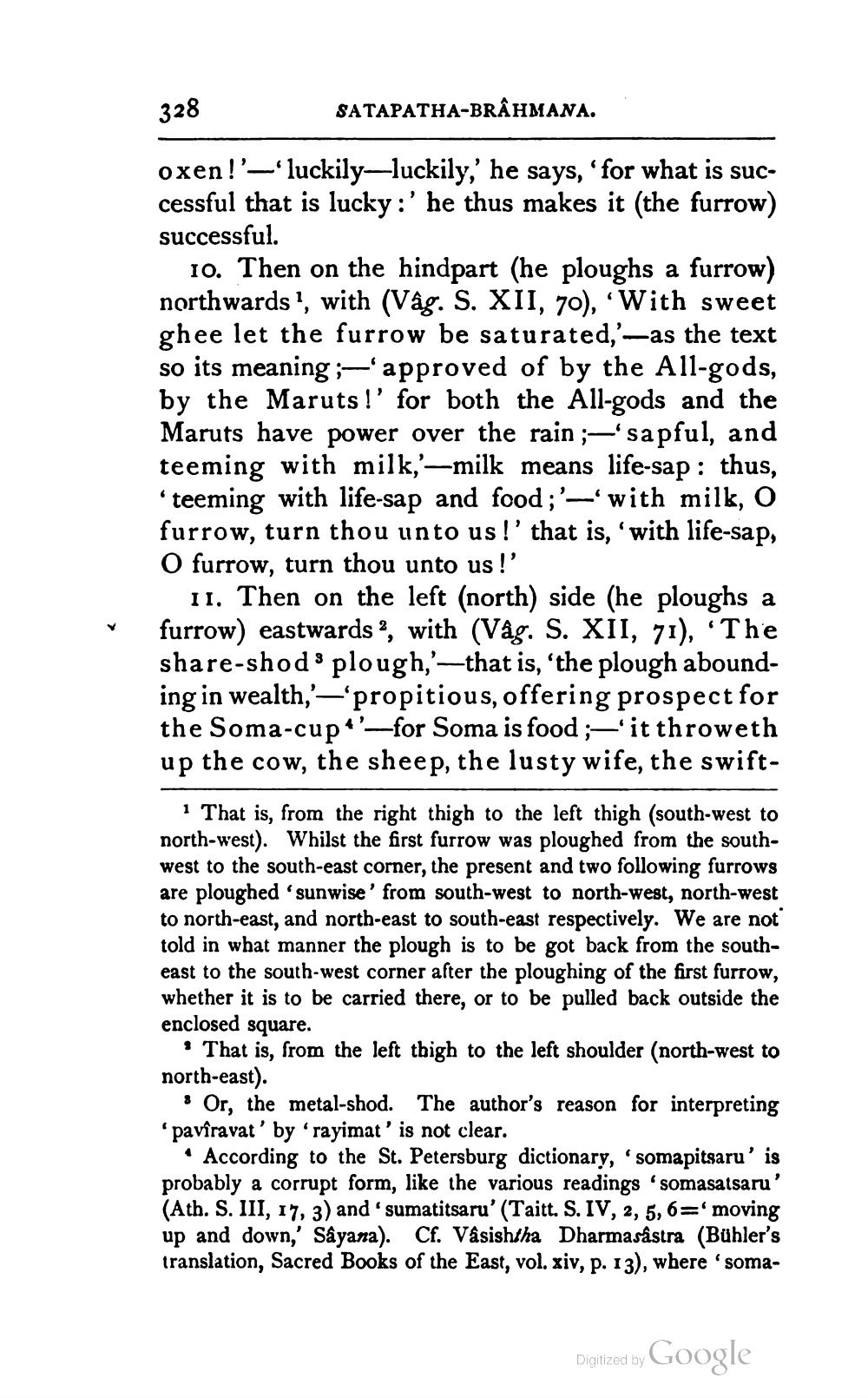________________
328
SATAPATHA-BRAHMANA.
oxen!'-—'luckily-luckily,' he says, 'for what is successful that is lucky :' he thus makes it (the furrow)
successful.
10. Then on the hindpart (he ploughs a furrow) northwards !, with (Vág. S. XII, 70), With sweet ghee let the furrow be saturated,'-as the text so its meaning ;-'approved of by the All-gods, by the Maruts!' for both the All-gods and the Maruts have power over the rain ;-'sapful, and teeming with milk,'—milk means life-sap: thus, 'teeming with life-sap and food;'— with milk, O furrow, turn thou unto us!' that is, 'with life-sap, O furrow, turn thou unto us!'
11. Then on the left (north) side (he ploughs a furrow) eastwards?, with (Våg. S. XII, 71), 'The share-shod plough,'--that is, 'the plough abounding in wealth,'—'propitious, offering prospect for the Soma-cupt'--for Soma is food ;-'it throweth up the cow, the sheep, the lusty wife, the swift
1 That is, from the right thigh to the left thigh (south-west to north-west). Whilst the first furrow was ploughed from the south west to the south-east corner, the present and two following furrows are ploughed 'sunwise' from south-west to north-west, north-west to north-east, and north-east to south-east respectively. We are not told in what manner the plough is to be got back from the southeast to the south-west corner after the ploughing of the first furrow, whether it is to be carried there, or to be pulled back outside the enclosed square.
• That is, from the left thigh to the left shoulder (north-west to north-east).
• Or, the metal-shod. The author's reason for interpreting pavîravat' by 'rayimat' is not clear.
• According to the St. Petersburg dictionary, 'somapitsaru' is probably a corrupt form, like the various readings somasatsaru' (Ath. S. III, 17, 3) and sumatitsaru' (Taitt. S. IV, 2, 5,6='moving up and down,' Sayana). Cf. Vasishtha Dharmasastra (Bühler's translation, Sacred Books of the East, vol. xiv, p. 13), where soma
Digitized by Google




